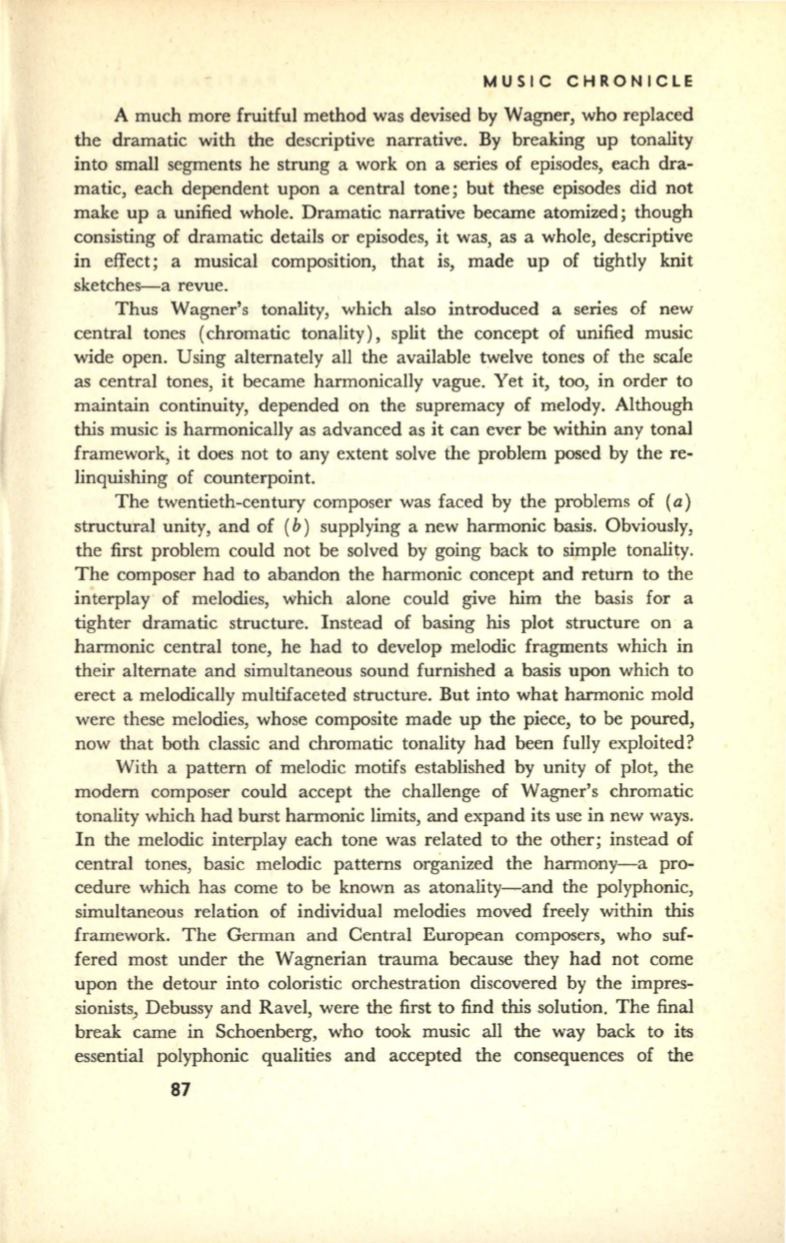
MUSIC CHRONICLE
A much more fruitful method was devised by Wagner, who replaced
the dramatic with the descriptive narrative. By breaking up tonality
into small segments he strung a work on a series of episodes, each dra–
matic, each dependent upon a central tone; but these episodes did not
make up a unified whole. Dramatic narrative became atomized; though
consisting of dramatic details or episodes, it was, as a whole, descriptive
in effect; a musical composition, that is, made up of tightly knit
sketches-a revue.
Thus Wagner's tonality, which also introduced a series of new
central tones (chromatic tonality), split the concept of unified music
wide open. Using alternately all the available twelve tones of the scale
as central tones, it became harmonically vague. Yet it, too, in order to
maintain continuity, depended on the supremacy of melody. Although
this music is harmonically as advanced as it can ever be within any tonal
framework, it does not to any extent solve the problem posed by the re–
linquishing of counterpoint.
The twentieth-century composer was faced by the problems of
(a)
structural unity, and of
(b)
supplying a new harmonic basis. Obviously,
the first problem could not be solved by going back to simple tonality.
The composer had to abandon the harmonic concept and return to the
interplay of melodies, which alone could give him the basis for a
tighter dramatic structure. Instead of basing his plot structure on a
harmonic central tone, he had to develop melodic fragments which in
their alternate and simultaneous sound furnished a basis upon which to
erect a melodically multifaceted structure. But into what harmonic mold
were these melodies, whose composite made up the piece, to be poured,
now that both classic and chromatic tonality had been fully exploited?
With a pattern of melodic motifs established by unity of plot, the
modern composer could accept the challenge of Wagner's chromatic
tonality which had burst harmonic limits, and expand its use in new ways.
In the melodic interplay each tone was related to the other; instead of
central tones, basic melodic patterns organized the harmony-a pro–
cedure which has come to be known as atonality-and the polyphonic,
simultaneous relation of individual melodies moved freely within this
framework. The German and Central European composers, who suf–
fered most under the Wagnerian trauma because they had not come
upon the detour into coloristic orchestration discovered by the impres–
sionists) Debussy and Ravel, were the first to find this solution. The final
break came in Schoenberg, who took music all the way back to its
essential polyphonic qualities and accepted the consequences of the
87


